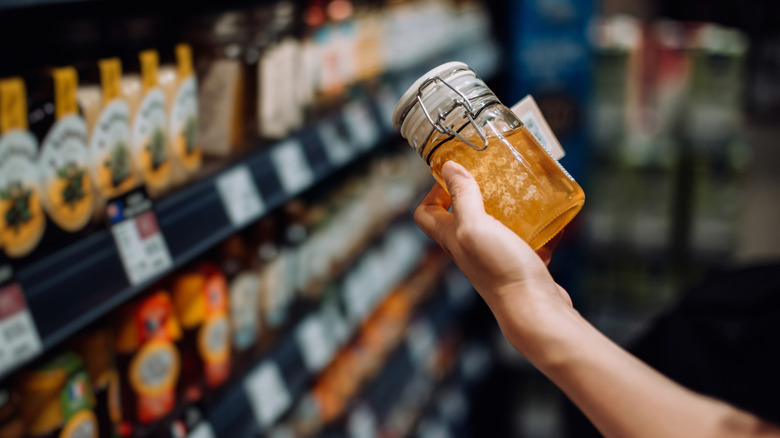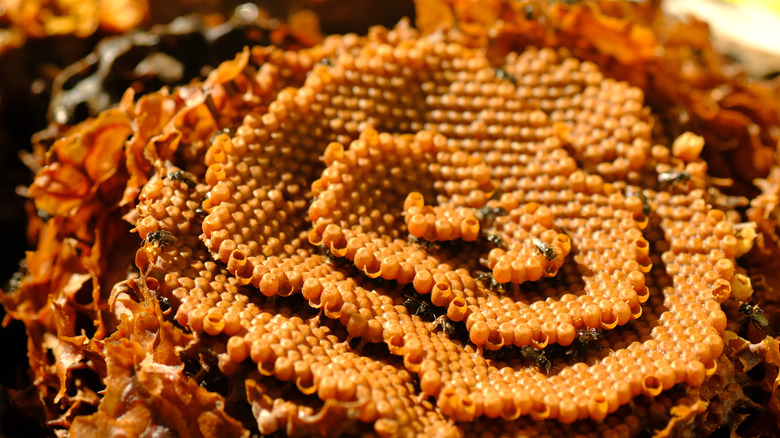Why You Won't Be Seeing Wasp Or Ant Honey In Stores Anytime Soon
Contrary to popular belief, honeybees aren't the only insects that make honey. Stingless bees, bumblebees, honey wasps, and honeypot ants all create their own unique versions of honey. So, why do we never see these variants alongside the extremely long-lasting honey on store shelves? Well, it all has to do with availability. Compared to honeybees, other honey-making insects make far less honey, making it difficult to mass produce for human consumption. We discussed the topic with Mateo Kaiser, a certified master beekeeper and the founder of Swarmed.
For him, honey made by wasps and ants is so different from the honey we're used to that he hesitated to even refer to it as honey. "Some ants and wasps produce sugary secretions you might loosely call 'honey,' but it's nothing like honeybee honey," Kaiser explained. "It's usually made in tiny amounts, can taste funky or sour, and just isn't collected on any scale. It's more of a curiosity studied by scientists or indigenous groups than something you'd actually want on toast." While the consumption of honey from ants is uncommon, the consumption of honeypot ants itself is far from unheard of. While eating insects isn't for everyone, some indigenous Australian peoples eat honeypot ants for their remarkable sweetness.
Why we rarely eat honey from other types of bees
When it comes to bumblebees, the reason we don't eat the honey they produce comes down to its functional use for the species. Because bumblebees need all the honey they produce for themselves, harvesting it for human use — especially on a large scale — would inevitably harm the species itself. However, the honey of stingless bees is regularly consumed and enjoyed.
Kaiser explained that some stingless bees "produce real honey that's fascinatingly different from what most people are used to," he said. "It's typically thinner, more acidic, with a tangy, fermented taste; almost like honey meets kombucha... People prize it culturally and medicinally, but it's hard to mass-produce."
Similarly to kiawe honey only being available in Hawaii, honey from stingless bees is hard to find outside of the countries which are home to that particular subcategory of insect. Kaiser noted that most of these honey-making stingless bees are native to Central and South America, but Australia is also home to stingless bees which produce a beloved version of honey called sugarbag honey. Nevertheless, Kaiser heaped great praise on the unique honey made from non-honeybees. "It's definitely worth trying stingless bee honey if you ever get the chance," he said. "It's a completely different experience from typical honeybee honey."

